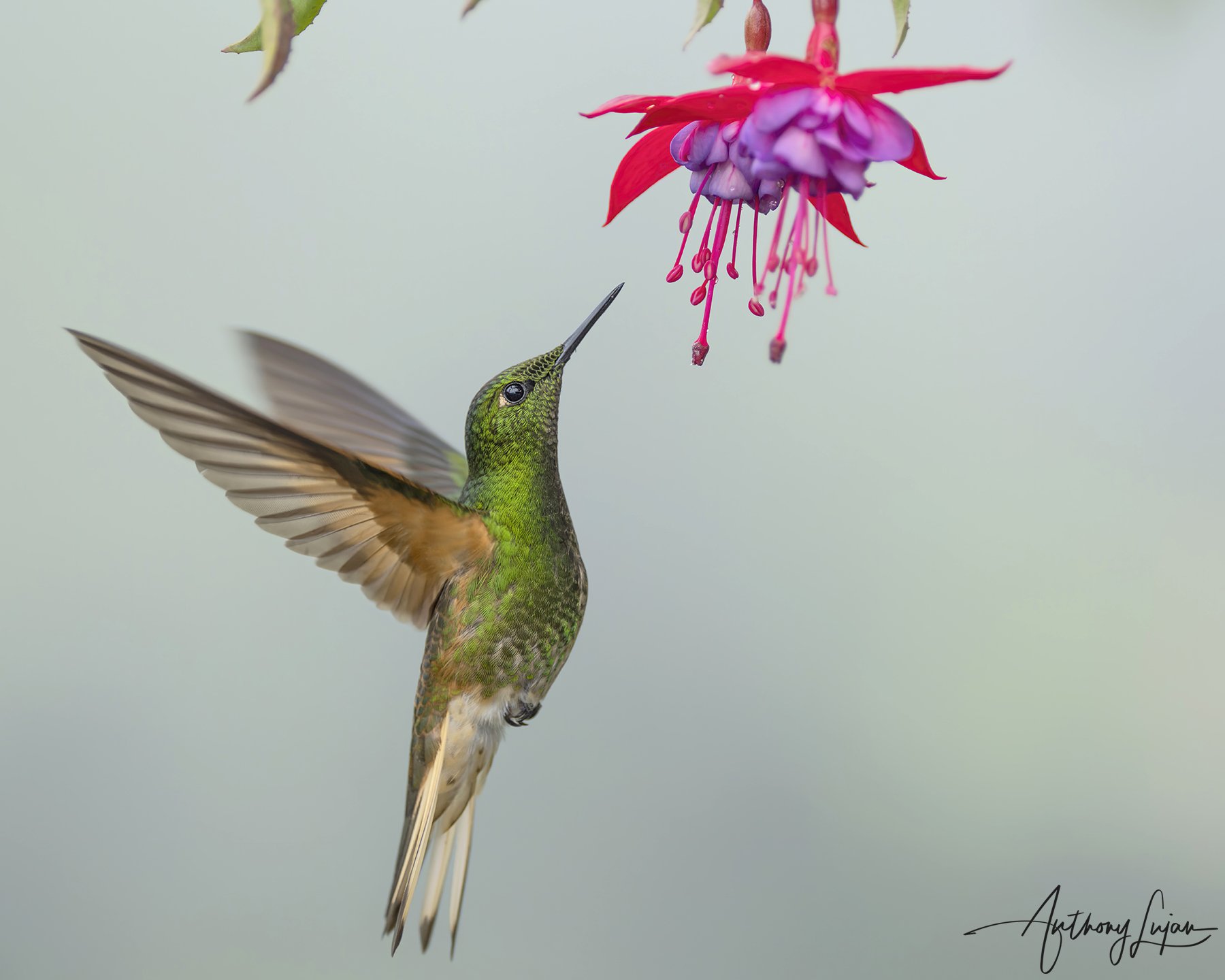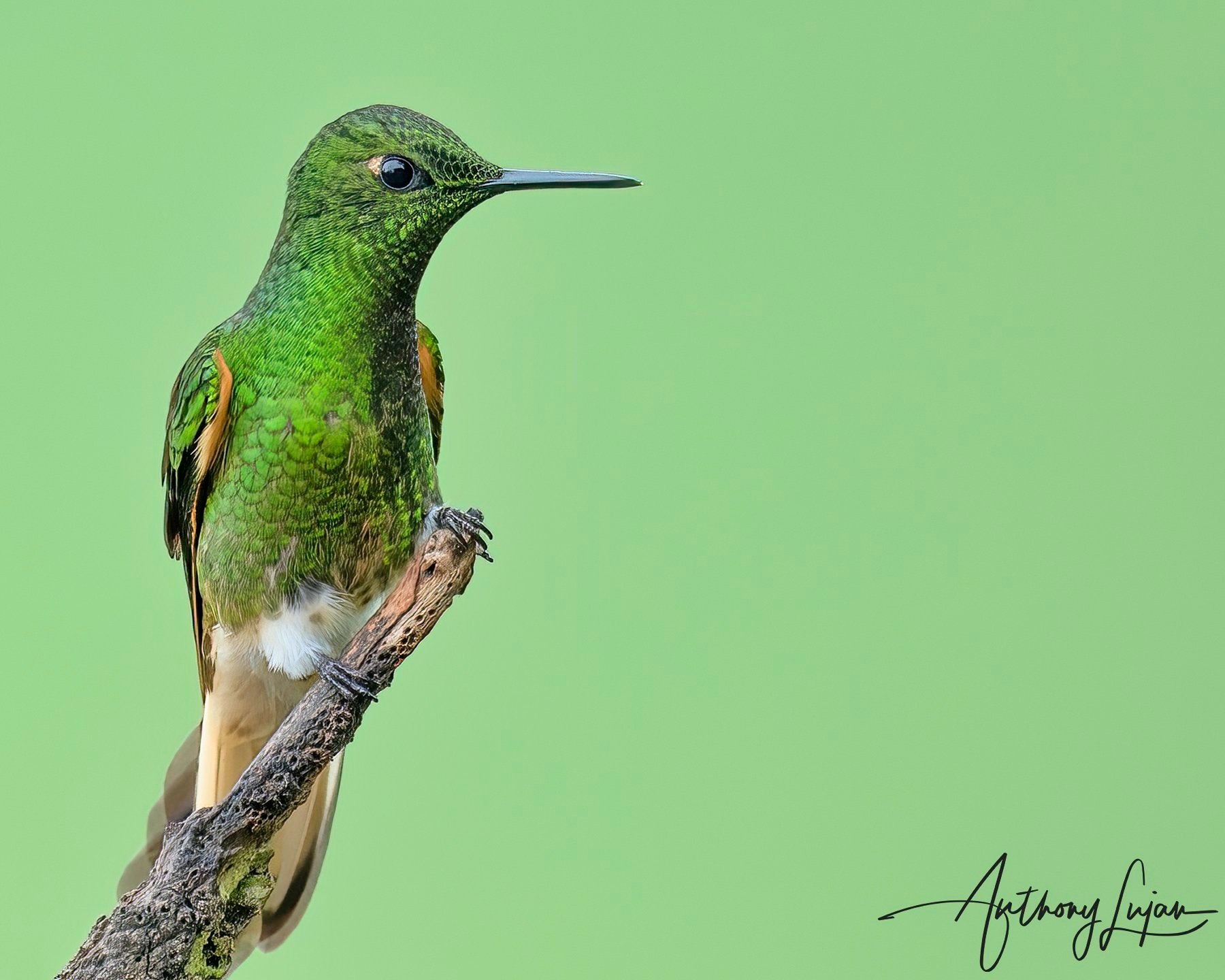Buff-tailed Coronet
Buff-tailed Coronet (Boissonneaua flavescens)
Name Origin:
The genus name Boissonneaua honors Auguste Boissonneau, a 19th-century French naturalist and ornithologist who studied Neotropical birds. The species name flavescens comes from the Latin flavus meaning “yellow,” a reference to the warm buffy or yellowish tone of the tail and undertail coverts.
Quick Facts
🪶 Length: 11–12 cm (4.3–4.7 in)
⚖️ Weight: 6–7.5 g (0.21–0.26 oz)
🌎 Range: Andes of Venezuela, Colombia, and Ecuador
🧭 Elevation: 1,200–2,800 m (3,940–9,200 ft)
🌸 Diet: Nectar and small insects
🏡 Habitat: Humid montane forest, forest edges, and shaded clearings
🧬 Clade: Heliantheini "Brilliants" (Andean forest hummingbirds)
📊 Status: Least Concern (IUCN)
Subspecies & Distribution
1. Boissonneaua flavescens flavescens
Distribution: Found in the Andes of western Venezuela (Mérida) and throughout Colombia, across all three Andean ranges (Western, Central, and Eastern).
2. Boissonneaua flavescens tinochlora
Distribution: Occurs in southwestern Colombia and along the western Andean slope south through Ecuador to Cotopaxi, and locally on the eastern slope of Ecuador (Napo).
Species Overview
The Buff-tailed Coronet is a large, sturdy hummingbird common in humid Andean forests and gardens. Its glittering green plumage, buffy tail, and loud, rapid wingbeats make it unmistakable. Known for its bold and aggressive temperament, it dominates feeders and flowering shrubs, often chasing smaller species away from favored nectar sources.
Male Description:
The male has brilliant golden-green upperparts and underparts, a rufous tail with bronze reflections, and rufous-buff undertail coverts. The wings are dusky with a faint purplish gloss. The crown and back gleam bright emerald in sunlight, and the underparts show a uniform metallic sheen. When hovering, the bird often flares its tail and spreads its wings outward in a signature posture.
Female Description:
The female is similar to the male but slightly duller overall, with less intense iridescence and a narrower buff undertail band. Her tail may show more greenish-bronze tones.
Habitat & Behavior:
The Buff-tailed Coronet inhabits humid montane forests, edges, and secondary growth, usually between 1,200 and 2,800 meters. It feeds on nectar from Palicourea, Fuchsia, Bomarea, and Besleria species, and also takes small insects for protein. Highly territorial and vocal, it frequently gives sharp tsik-tsik calls and performs high-speed chases around feeding sites. Its characteristic hovering stance, with wings held out and down, is often used to assert dominance.
Conservation Note:
The Buff-tailed Coronet is listed as Least Concern by the IUCN and remains abundant and widespread in suitable habitat. It adapts well to disturbed forests and shaded gardens, making it one of the most frequently observed Andean hummingbirds. Ongoing protection of cloud forest corridors and mid-elevation flowering trees supports the long-term health of this resilient Heliantheini species.
Below is the Buff-tailed Coronet (Boissonneaua flavescens flavescens)
Photographed at Reserva Ecológica Río Blanco – Lodge, Caldas, and Colibrí del Sol ProAves Reserve, Antioquia, Colombia
These individuals belong to the nominate subspecies flavescens, which is widespread along the Central and Eastern Andes of Colombia. It is typically found in humid montane forest, cloud forest edge, and high elevation woodland, often at elevations above 2,000 meters.








